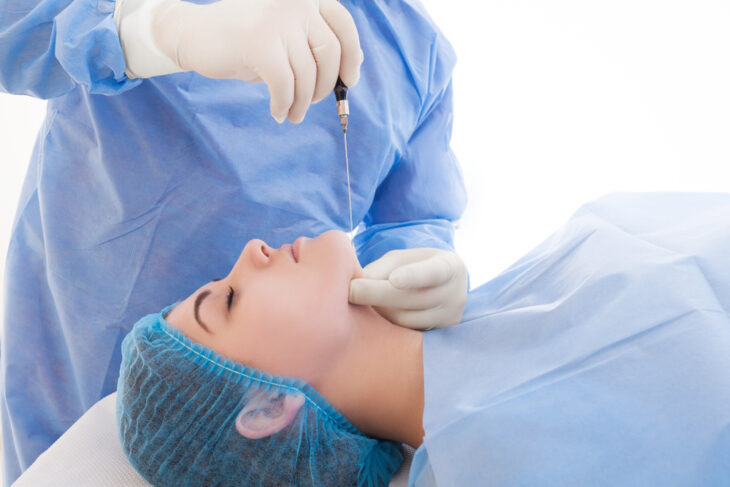Facial liposuction can help address excess fat deposits in your cheeks, chin, and neck area that do not respond well to regular exercise and dietary changes. Also known as submental liposuction, this procedure makes use of a small, thin tube attached to a vacuum device to remove fat from the target area. Facial liposuction can be performed as a standalone procedure or it can be combined with other facial rejuvenation procedures for optimal results.
Contents
The Facial Liposuction Procedure

Source: facialplasticsbh.com
Before the procedure, you will undergo a consultation to determine if you are a potential candidate. During this process, your health history, skin condition, and expectations about the procedure will be assessed. This allows the creation of a customized treatment plan specific to your needs.
On the day of the procedure, you will receive local or general anesthesia to minimize discomfort. Once the anesthesia has taken effect, a tiny incision (less than half an inch) will be created in the target area. The incision can be created under your chin or behind your ear lobe. Through this incision, a small, thin tube (cannula) that is attached to a powerful suction will be carefully inserted to vacuum the fat layer within your skin. To break the fat layer, the tube will be pushed then pulled several times.
Once broken down, the force of the suction will remove the fat cells out of the target area. After removing the desired amount of fat, the incision will be then closed using dissolvable sutures. Sterile gauze or dressing will be applied over the surgical wound to protect it from injury and prevent infection. Depending on the extent of the procedure, the entire process may take an hour or more to complete.
Immediately following the procedure, you will likely experience bruising and swelling in the treated area. To reduce swelling, you will need to wear a compression garment or tight chin strap. The consistent pressure applied by this special type of garment also reduces the risk of bleeding and helps the treated area to adjust to its new contour.
Once you get home, you will need to avoid strenuous exercises and other activities that can put tension or pressure on your incision sites. As you recover, you need to take the prescribed medications and apply an ice compress over the treated area to minimize discomfort. After the swelling subsides, you will begin to notice a significant improvement in the overall appearance of the treated area.
Ideal Candidates for Facial Liposuction

Source: allure.com
While facial liposuction is considered minimally invasive, not everyone can have the procedure. According to CosmosClinic in Sydney, you are an ideal candidate for facial liposuction if:
- You have frustrating pockets of fat in your cheeks, neck area, and around your jawline: The procedure is effective in addressing unwanted fatty tissue in your facial area that does not respond well to regular exercise and dietary changes.
- You have realistic expectations about the results of the procedure: It is important to keep in mind that the procedure is not a weight loss solution and it cannot remove excess skin from the target area. After facial liposuction, you will still need to commit to a healthy lifestyle to maintain the results.
- You are within the ideal body weight: You should be within 30 pounds of your ideal body weight as weight fluctuations after the procedure can cause the remaining fat cells in the treated area to expand or increase in size, thus, altering the results of facial liposuction.
- You have good skin elasticity: Facial liposuction can effectively sculpt areas of unwanted fatty tissue from the target area if you have good skin elasticity. On the other hand, using the procedure on areas with poor skin elasticity can cause the skin to sag more once the fat is removed.
- You are in good overall health: You are not an ideal candidate if you have medical conditions that can affect your healing ability such as clotting or bleeding disorders.
Risks and Complications of Facial Liposuction
As with any body contouring procedure, there are risks and complications. The following are some common problems that you may experience after facial liposuction:
- Anesthesia complications (itching, shortness of breath, or severe redness of the skin)
- Bleeding from the incision sites
- Blood and fluid build-up under the skin
- Changes in the sensation of the treated area
- Delayed wound healing
- Formation of blood clots
- Increasing pain in the treated area
- Infection (characterized by fever or pus draining from the incision sites)
- Irregular pigmentation
- Nerve damage
- Poor cosmetic results
- Rippling or loose skin
- Severe bruising and swelling
- Unfavorable scarring
During your recovery period, it is important that you listen to your body and observe for any untoward signs and symptoms. If you experience any problem, it is recommended that you seek medical help as soon as possible for further evaluation and management
Facial Liposuction Aftercare

Source: faisalsalim.com
Your recovery after facial liposuction may take some time but there are ways to speed up the process. After the procedure, you will be provided with specific aftercare instructions, such as:
- Apply an ice compress over the treated area to minimize discomfort.
- Avoid contact sports until the incisions have fully healed.
- Avoid lifting or bending over.
- Avoid strenuous exercises and activities that can place tension or pressure on the incision sites.
- Avoid taking blood thinners and supplements that can increase your risk of bleeding.
- Do not massage the incisions sites.
- Do not put make-up over the incision sites for 5 to 7 days.
- Drink plenty of water and clear liquids.
- Keep your head elevated using 2 to 3 pillows when sleeping.
- Perform light walking exercises after 48 hours.
- Rest as much as you can for the first 24 to 48 hours.
- Seek medical help immediately in case of untoward signs and symptoms.
- Sleep on your back.
- Take the prescribed medications.
- Wear your compression garments religiously to reduce swelling and bruising.
Facial liposuction is a pretty common plastic surgery procedure these days because it does not require long term recovery and results are mostly quite impressive.
